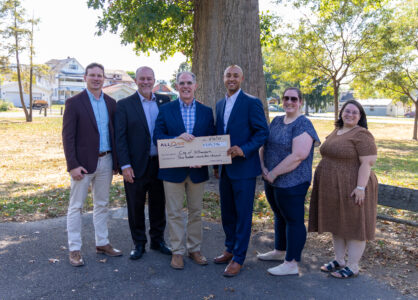Expert suggestions include tax increase, City Hall sale, more to lessen impending budget deficit
A Philadelphia-based financial analyst firm doing a strategic management plan for Williamsport provided a chart for City Council listing a $5.1 million 2026 budget deficit should the city officials take no corrective action.
“Our charge is how to close a $5 million hole,” said Gordon Mann, managing director, Public Financial Management (PFM).
As part of a plan, paid mostly by the state Department of Community and Economic Development (DCED), recommendations were provided.
One option to close the deficit gap is to include a property tax increase.
The firm noted a 0.5 mill tax hike would generate $430,000; a 1 mill tax hike, $860,000, and a 2 mill tax increase, $1.7 million.
“It’s hard for me to construct a scenario where you don’t have a real estate tax increase,” Mann said.
That was echoed by Council President Adam Yoder, who said he was appreciative of the data heading into budget season. Councilwoman Liz Miele, chair of the city finance committee, also said she felt more at ease going into the budget talks having the data and more options that will be presented next month.
In terms of the historic and condemned City Hall on Fourth Street, “Shed the financial liability” and risk … “the building is not an option for the police,” Mann said.
He noted how this city has an ability to transform historic structures and repurpose them.
“We need to make a decision on City Hall,” Councilman Jon Mackey said, adding another year of winter heating is near.
The 2025 budget is balanced, but balanced by use of one-time reserves and funding from the emergency and reserves fund that is not available in perpetuity unless revenues are budgeted this year, he said.
Backing that one-time revenue out of the budget, it is about a $4.5 million deficit, he said.
It won’t balance. It is not going to go from $5 million to zero by hope and waiting, he said.
In studying the coming years based on current trajectories, PFM projects a possible $6.4 million deficit in 2030, and Mann said that was not going to be solved “tonight,” or “even in this process.”
Instead, he added, the firm said the city wants to close the 2026 budget hole and do so in such a way that it has recurring benefits so that what is done next year also makes the hole smaller in 2027 and 2028.
“We have to close the $5 million deficit — we need big chunks,” he said.
The options on the revenue side includ:
• A temporary use of revenues as bridge funding — $1.7 million, a one-time expense.
• Increase real estate tax.
• Adapt Home Rule to increase resident-earned income tax by 0.5 % or 1 % — $2.9 million to $5 million.
• Increase payments-in-lieu-of-taxes — $260,000.
• Requesting the state to authorize the city to triple the $52 rate Local Services Tax — $2 million.
• Diligent tax collection/enforcement — $175,000 to $200,000.
Options on expense side:
• Temporary reduction/suspension in capital spending — up to $760,000.
• Position cuts via attrition — $75,000 to $100,000 per position.
• Smaller wage increases than projected.
• Double employee contributions — $100,000.
• More substantial health insurance changes — $250,000.
• Regionalization/intergovernmental coop
The city has reserves it can draw down — depending on the last months of this year, $1.7 million could be applied to the deficit. The city had $7.4 million in cash in the bank for operating accounts.
Mann suggested the city set aside $3.6 million in emergency reserves — split between a payment to the Federal Transit Administration of $1.4 million, and the levee.
Take about $2.1 million for what the city needs to cover cash flow needs until real estate tax revenue arrives, he told city officials.
Laying people off costs money due to unemployment claims, and the only option until and if the city goes to a Home Rule is a real estate tax. The real estate tax could be rolled back if the city uses its reserves, or cash-on-hand, he said.




